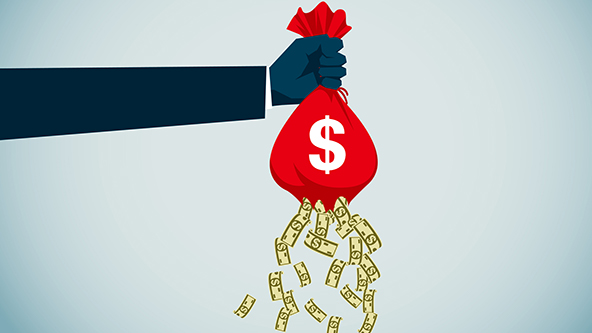Leading Nonprofit Company: Offering Strategic Advice for Mission-Driven Groups
Leading Nonprofit Company: Offering Strategic Advice for Mission-Driven Groups
Blog Article
The Importance of Cooperation and Collaboration for a Nonprofit Company in Maximizing Resources and Enhancing Neighborhood Involvement
In the world of nonprofit agencies, collaboration and partnership arise as crucial devices for promoting and magnifying resources community engagement. These partnerships not only enhance program efficacy but additionally grow a much deeper feeling of area involvement and possession.
Benefits of Cooperation

In addition, partnership cultivates technology by motivating the exchange of ideas and finest practices. When organizations function together, they can check out varied perspectives, causing innovative solutions that may not emerge in seclusion. This common analytical approach can inevitably enhance solution delivery and program results.
Additionally, collective initiatives can improve community interaction. When nonprofits partner with each other, they can activate more comprehensive assistance from stakeholders, including volunteers, contributors, and community members. This cumulative interaction not only raises presence but likewise enhances the credibility of the participating companies.
Building Strategic Partnerships
Collaboration among not-for-profit companies often results in the development of tactical collaborations, which are crucial for making the most of influence and achieving common goals. These partnerships enable organizations to utilize each other's toughness, enhancing service shipment and broadening outreach. By lining up purposes and goals, nonprofits can create a synergistic result that amplifies their reach and performance within the community.
Structure strategic partnerships needs cautious preparation and good understanding. Organizations needs to initially recognize possible companions that share comparable worths and objectives, making certain compatibility in objective and vision. Establishing open lines of interaction cultivates trust fund, allowing partners to talk about sources, expectations, and responsibilities transparently. Collaborative campaigns and normal meetings can help maintain energy and address challenges proactively.
Furthermore, plainly defined duties and responsibilities are essential for responsibility and success. Defining the partnership with written contracts can give a framework for partnership, outlining the range of work, efficiency metrics, and assessment approaches. By fostering these strategic alliances, not-for-profit agencies can improve their capability to address neighborhood needs, introduce services, and set in motion sources efficiently, inevitably leading to a more substantial and sustainable influence in the communities they serve.
Sharing Resources Successfully
Just how can not-for-profit companies maximize their impact through efficient resource sharing? By purposefully working together with other companies, nonprofits can boost their functional effectiveness and expand their reach within the area. Resource sharing entails pooling numerous assets, including monetary sources, personnel, expertise, and centers, to deal with typical objectives better.

Additionally, leveraging each various other's toughness can cultivate innovation. By exchanging understanding and ideal practices, firms can enhance service delivery and create new remedies to neighborhood difficulties. Effective resource sharing likewise cultivates a feeling of unity, reinforcing the idea that cooperation is necessary for accomplishing significant social impact.
Involving the Neighborhood
What strategies can not-for-profit companies utilize to successfully engage their areas? Primarily, establishing open lines of interaction is essential. Using numerous platforms, such as social media, e-newsletters, and neighborhood forums, enables agencies to disseminate details, obtain comments, and foster dialogue. This two-way interaction not only educates the neighborhood concerning the company's mission and tasks but additionally invites input, making neighborhood participants really feel valued and involved.
In addition, forming collaborations with local companies can boost outreach initiatives. nonprofit agency. Teaming up with colleges, businesses, and various other nonprofits can enhance resources and develop an extra substantial support network, enabling joint initiatives that reverberate with community requirements
Additionally, organizing area occasions, workshops, and volunteer possibilities can help with much deeper involvement. These activities produce a feeling of belonging and encourage our website energetic involvement, enabling individuals to add to the company's objectives while building relationships with fellow neighborhood members.
Determining Collective Success
Assessing the efficiency of joint initiatives is important for nonprofit agencies seeking to maximize their impact. Measuring collaborative success includes establishing clear, measurable purposes and using a variety of metrics to evaluate performance. Secret indicators might consist of the number of collaborations formed, resources shared, and the substantial results accomplished through partnership.
To effectively determine success, nonprofits should implement a framework that integrates both quantitative and qualitative information. Studies and meetings can supply understandings right into stakeholder fulfillment and the viewed value click over here of collaborations. Furthermore, tracking metrics such as solution reach, area involvement levels, and economic performance can provide a detailed view of collaborative performance.
Regular evaluations should be conducted to determine areas of improvement and best practices. This repetitive procedure not only enhances accountability however also promotes a culture of continuous understanding within the organization - nonprofit agency. By transparently sharing analysis results with partners and stakeholders, nonprofits can build and reinforce connections trust
Eventually, measuring collective success makes it possible for not-for-profit companies to refine their strategies, allot sources extra efficiently, and boost their mission-driven efforts, leading to a greater collective influence on the communities they serve.
Conclusion

In the world of nonprofit agencies, collaboration and collaboration arise as essential mechanisms for intensifying resources and cultivating neighborhood involvement - nonprofit agency. why not find out more By fostering these tactical alliances, nonprofit firms can improve their ability to resolve area needs, introduce remedies, and set in motion sources effectively, ultimately leading to a more considerable and lasting impact in the neighborhoods they offer
By purposefully teaming up with various other organizations, nonprofits can improve their functional efficiency and prolong their reach within the community.What methods can not-for-profit firms utilize to properly engage their areas?Cooperation and collaboration stand as important pillars for not-for-profit agencies intending to make best use of sources and boost community involvement.
Report this page